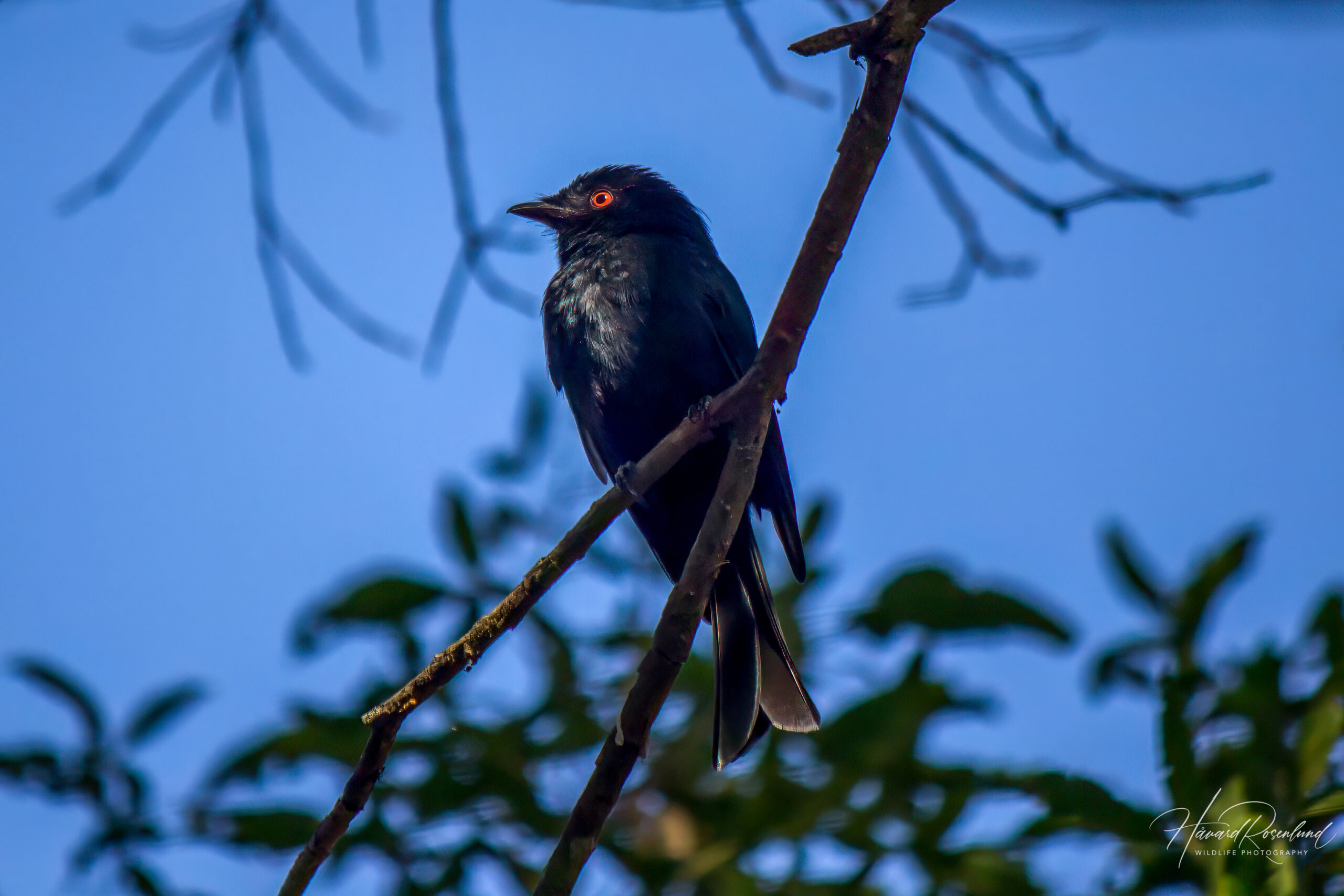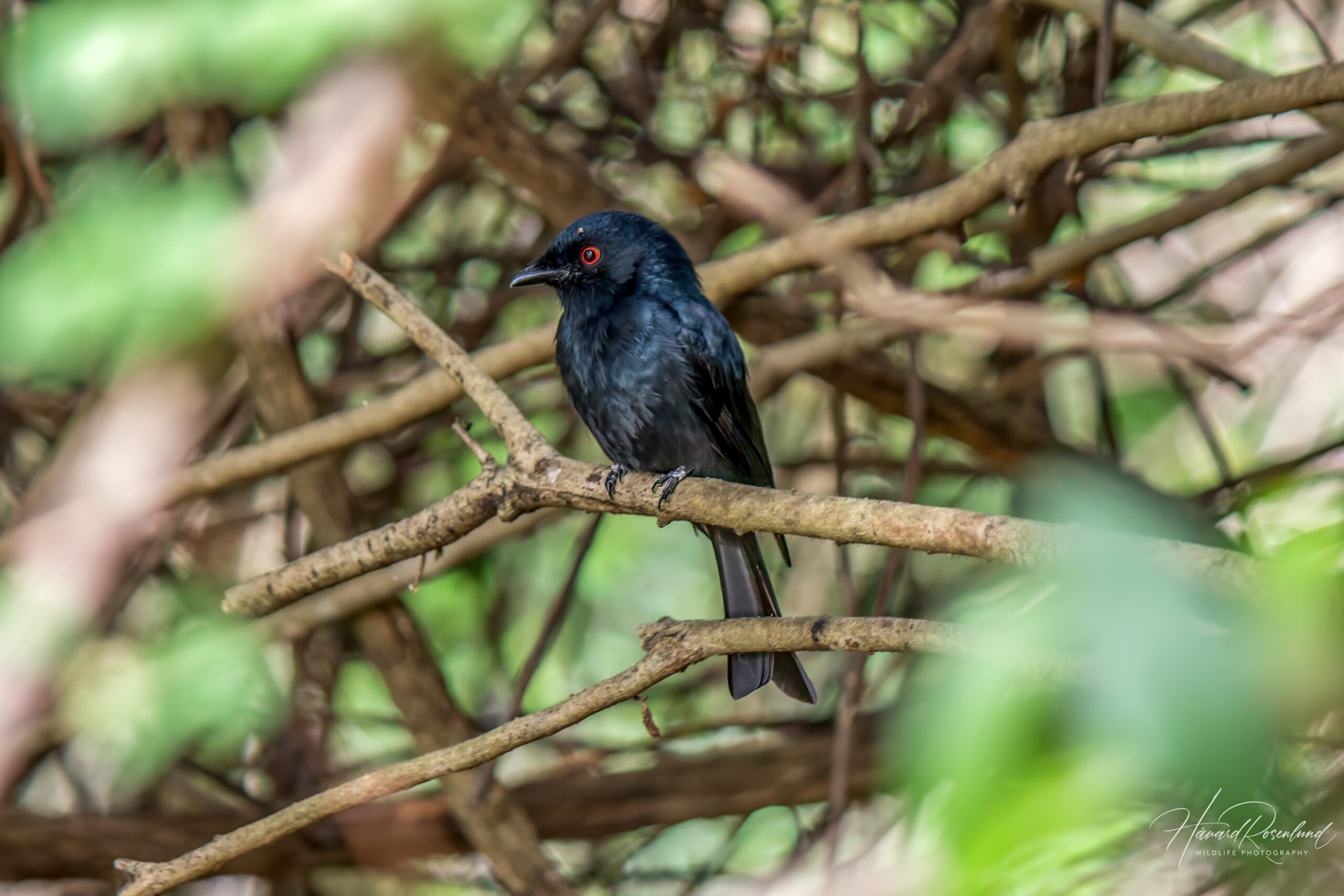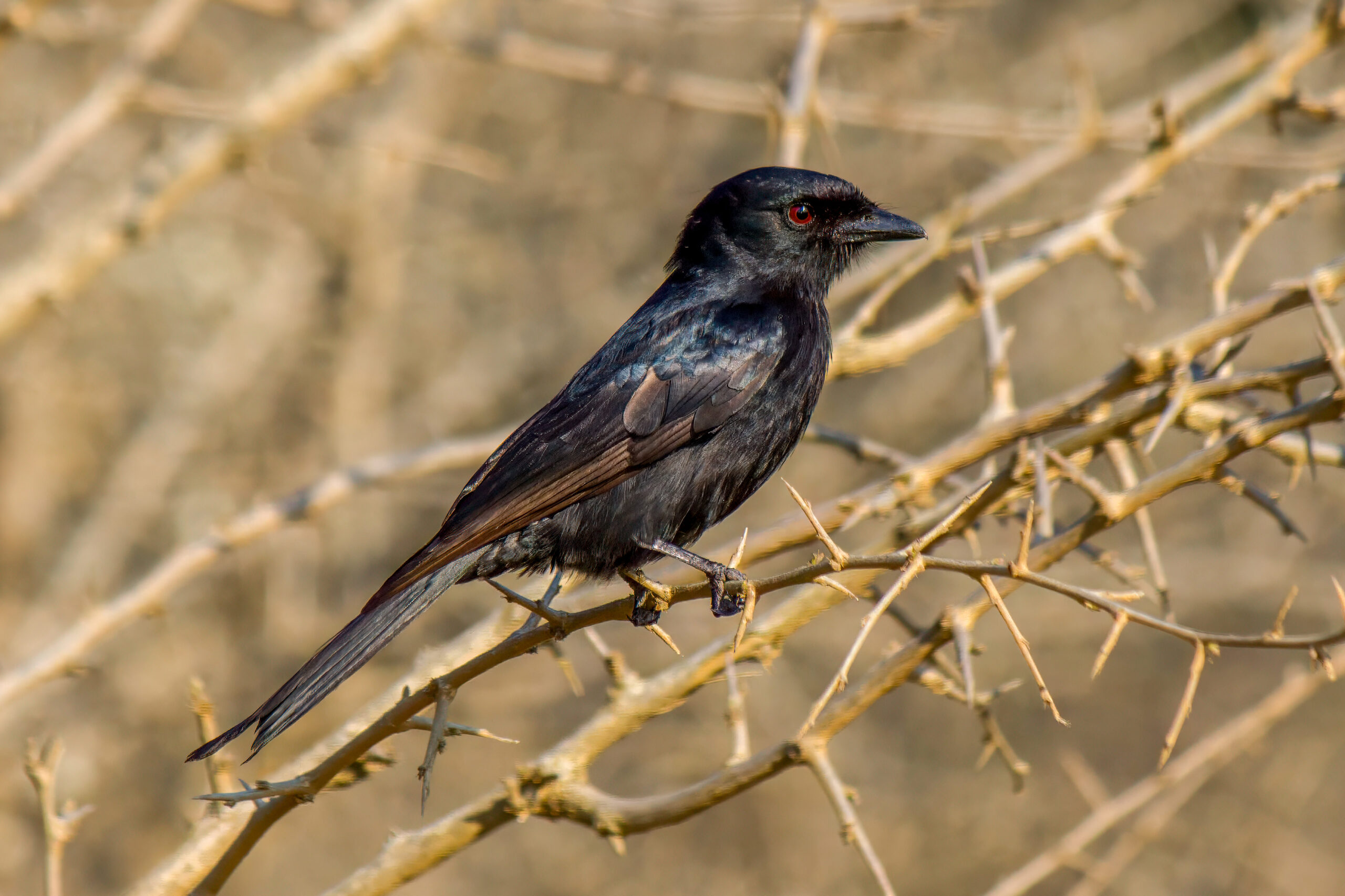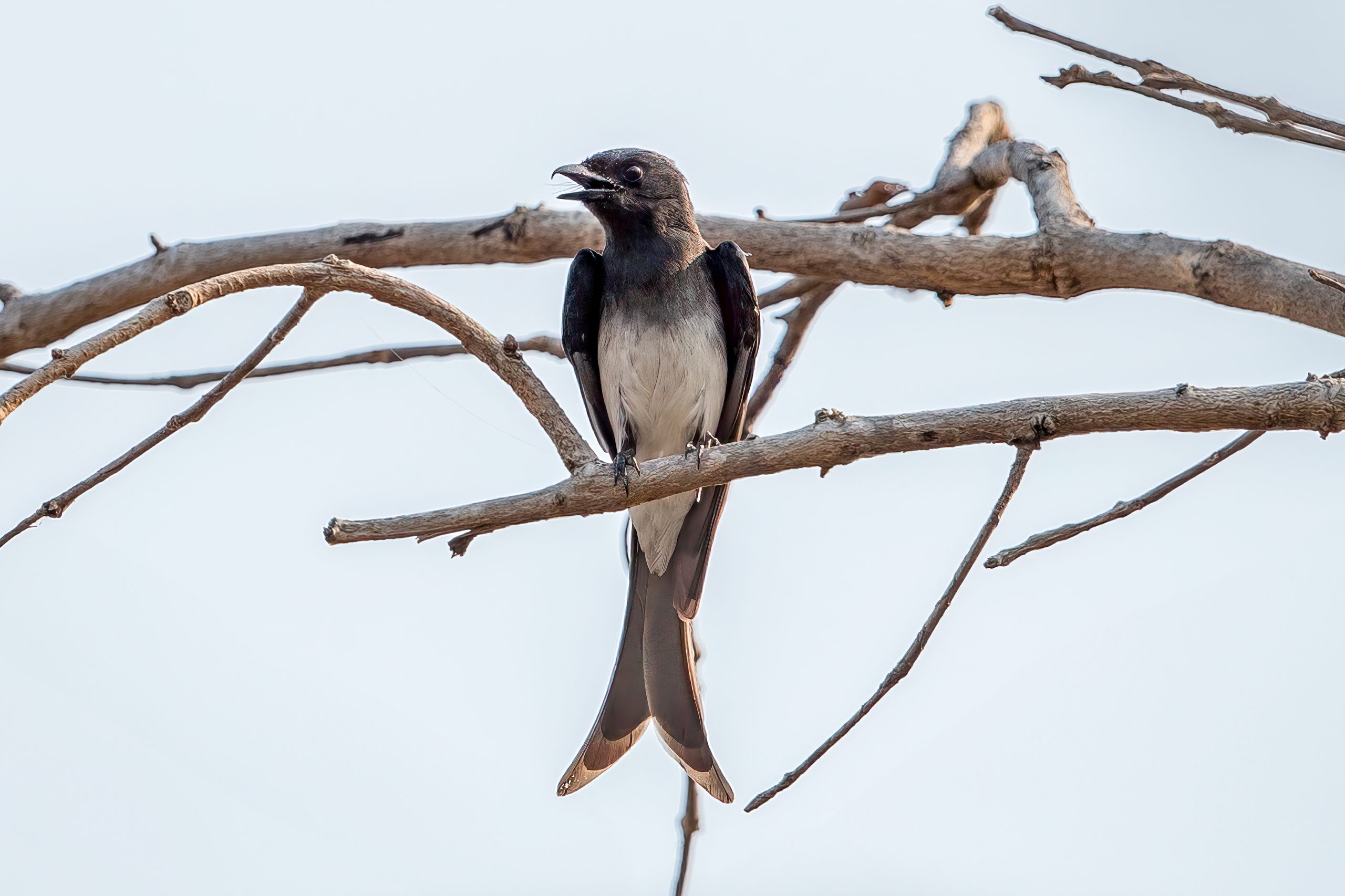Description
The square-tailed drongo (Dicrurus ludwigii) is the smallest species of drongo native to sub-Saharan Africa. It reaches a length of 18-19 cm (7-7.5 in). In appearance it is very similar to the fork-tailed drongo (Dicrurus adsimilis), with a black body and red eyes. In both species males are glossier than females. It differs in size, as it is much smaller. It has a shorter and markedly less forked tail, and it is sometimes seen as totally square if the feathers are aligned correctly. Although there are some physical differences between the species, the best way to tell them apart is perhaps on habitats. The square-tailed drongo prefers denser forests, and the fork-tailed drongo is typically found in more open habitats.
Diet & habitat
As mentioned, the square-tailed drongo prefers dense forests, and is very often found in riverine forests, evergreen forests and tree plantations with indigenous undergrowth. It mainly eats insects, which it hunts from a perch or by catching them in the air. It often forages close to other species of birds and will often steal food from them, a behaviour known as kleptoparasitism. It will also feed on nectar.
Nesting
This species is monogamous, and a breeding pair will stay together for life. The nest is a sturdy little cup made up of grass, twigs, and other similar plant debris. It is bound together using spider webs. The nest is often situated in a fork in tree, typically quite high up close to the canopy and hidden behind vegetation cover. The female lays 2-4 eggs.
Status
The square-tailed drongo is seen a lot less than its larger cousin the fork-tailed drongo because it prefers denser habitats where it is harder to spot. It is still a common bird within its smaller distribution and the species is not threatened. It is listed as least concern on the IUCN Red List.








